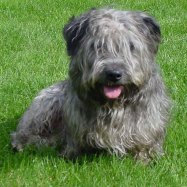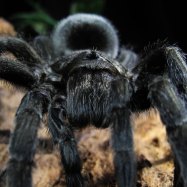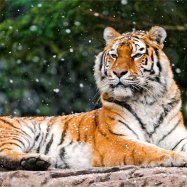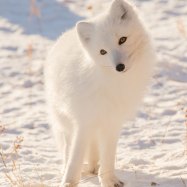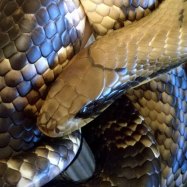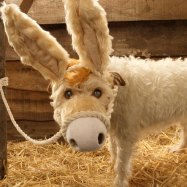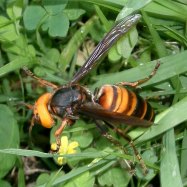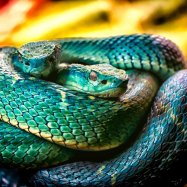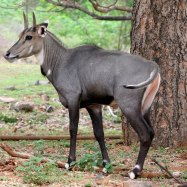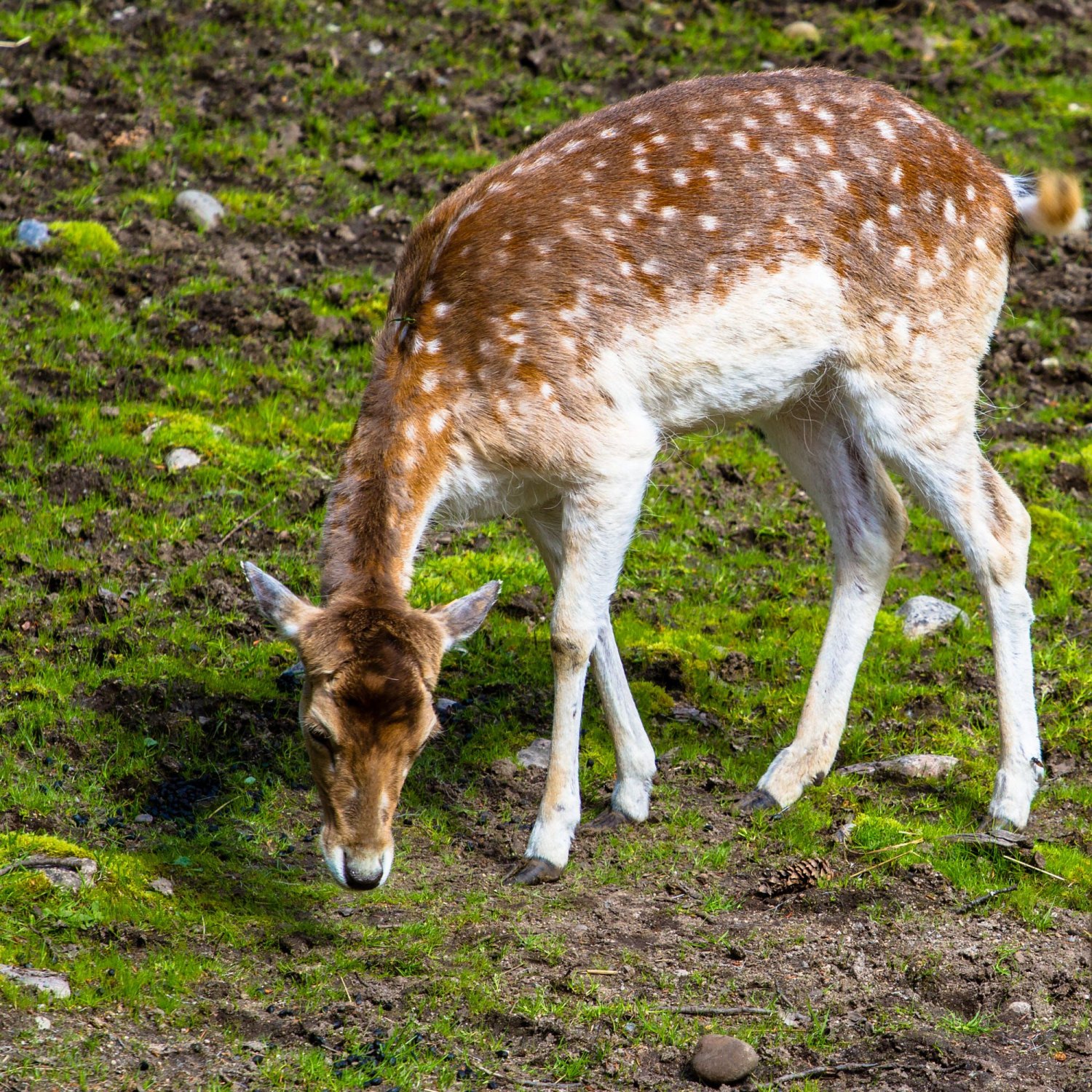
Fallow Deer
130-160 cm
Fallow Deer are beautiful creatures that can be found in various countries. With a length of 130-160 cm and a medium-sized, slim body shape, they belong to the Cervidae family, which includes deer, moose, and elk. These elegant animals have long legs, making them swift runners and agile jumpers. Keep an eye out for these majestic animals on your next outdoor adventure!
Animal Details Summary:
Common Name: Fallow Deer
Kingdom: Animalia
Habitat: Woodlands, grasslands, and open fields
Fascinating Facts About Fallow Deer: A Graceful Species of Cervidae
Fallow Deer, also commonly known as Dama dama, is a stunning species of deer that belongs to the Cervidae family. These elegant animals are well-known for their unique coloration, graceful body shape, and majestic antlers. Their presence adds a touch of magic to the woodlands, grasslands, and open fields they inhabit. In this article, we will explore the remarkable features and behaviors of Fallow Deer, and discover what makes them such a beloved species Fallow Deer.
Kingdom: Animalia
As members of the Animalia kingdom, Fallow Deer are classified as belonging to the animal kingdom, which comprises a diverse array of species. This includes creatures ranging from microscopic organisms to giant mammals like whales and elephants. Being part of the animal kingdom means that these deer possess all the characteristics that are common to this group of organisms, such as being multicellular, having a nervous system, and being able to move independently.Phylum: Chordata
Fallow Deer are also classified under the phylum Chordata, a group of animals that possess a notochord, a hollow dorsal nerve cord, and gill slits at some point in their lives. This phylum is a diverse group that includes fish, amphibians, reptiles, birds, and mammals. Fallow Deer are categorized as chordates due to their possession of a notochord during their early development.Class: Mammalia
Fallow Deer are classified as members of the class Mammalia, which means they share certain characteristics with other mammals such as having hair/fur, mammary glands (for nursing their young), and the ability to regulate their body temperature. Mammals are considered one of the most highly evolved classes of animals, with over 5,400 species found all over the world.Order: Artiodactyla
Fallow Deer are part of the order Artiodactyla, which includes all even-toed hoofed animals such as deer, antelopes, cows, pigs, and giraffes Fila Brasileiro. The name Artiodactyla comes from the Greek words "arti", which means even and "dactylos", meaning finger or toe. This refers to the fact that these animals have an even number of toes on their feet. This order has over 250 species, and the Fallow Deer is just one of the many fascinating creatures that belong to it.Family: Cervidae
As mentioned before, Fallow Deer belong to the family Cervidae, which includes some of the most beloved and iconic animals, such as deer, moose, elk, and reindeer. This family is known for its species' majestic antlers, which they shed and regrow every year. Cervidae is a diverse family, with over 50 species that are found in different parts of the world.Habitat
Fallow Deer are known to inhabit a wide variety of ecosystems, but their main habitat is woodlands, grasslands, and open fields. They can also be found in parks and gardens in various countries. These deer are native to Europe, but have been introduced in other parts of the world, such as North America, Australia, and New Zealand.They prefer open areas with plenty of vegetation for grazing and require a water source nearby. Fallow Deer are also adaptable to various environments, and can thrive in both hot and cold climates. However, they are most commonly found in temperate regions, where the climate is mild and favorable for their growth and survival.
Feeding Method
Fallow Deer are herbivores, meaning they feed on plants and vegetation. Their diet mainly consists of grass, leaves, shrubs, and herbs. They are also known to eat fruits and acorns, especially during the autumn season when they need to build up their fat reserves for the winter. These deer have a specialized digestion system that allows them to extract as many nutrients as possible from their plant-based diet.Geographical Distribution
Fallow Deer can be found in many parts of the world, including Europe, Asia, and North Africa. However, their native and most concentrated range is in Europe, where they were originally found in the Mediterranean region. Over time, they have been introduced to other continents for hunting and conservation purposes and can now be found in various countries worldwide.Country of Origin
As mentioned before, Fallow Deer are originally from Europe, making it the country of origin for this species. They have been a part of European culture for centuries, and their presence can be found in paintings, literature, and folklore. These animals were highly valued for their meat, fur, and majestic antlers, which were used for hunting and decoration.Location
Today, Fallow Deer can be found in various countries worldwide, mostly in parks, reserves, and hunting grounds. Some countries where they can be found include the United States, Canada, Australia, New Zealand, and Argentina. They have also been introduced in countries such as South Africa, where they are farmed for their antlers, meat, and leather.Animal Coloration
Fallow Deer have a stunning and unique coloration that sets them apart from other species of deer. Their coat is mostly in various shades of brown, ranging from light to dark, with white spots or patches on the back, sides, and belly. This coloration serves as camouflage, allowing them to blend in with their surroundings and protect themselves from predators.Body Shape
Fallow Deer have a medium-sized and slim body shape, with long, graceful legs that allow them to run and leap swiftly. This body shape is well-adapted for their lifestyle, as it helps them navigate through their mixed open habitats. They also have a flexible spine that enables them to move swiftly through dense vegetation and climb over obstacles.Length, Height, and Weight
On average, Fallow Deer measure between 130-160 cm in length, with males being slightly larger than females. They have a height range of 75-110 cm at the shoulder, with males being taller and more robust than females. In terms of weight, they can range from 30-90 kg, with males being significantly heavier than females.In conclusion, Fallow Deer are a fascinating and graceful species of deer that possess unique characteristics and adaptations. Their presence in various ecosystems adds to the diversity and beauty of the animal kingdom. They are a testament to the adaptability and resilience of nature and serve as a reminder of the importance of conservation efforts to protect these stunning creatures for future generations.

Fallow Deer
Animal Details Fallow Deer - Scientific Name: Dama dama
- Category: Animals F
- Scientific Name: Dama dama
- Common Name: Fallow Deer
- Kingdom: Animalia
- Phylum: Chordata
- Class: Mammalia
- Order: Artiodactyla
- Family: Cervidae
- Habitat: Woodlands, grasslands, and open fields
- Feeding Method: Herbivore
- Geographical Distribution: Europe, Asia, and North Africa
- Country of Origin: Europe
- Location: Various countries
- Animal Coloration: Various shades of brown with white spots or patches
- Body Shape: Medium-sized and slim with long legs
- Length: 130-160 cm
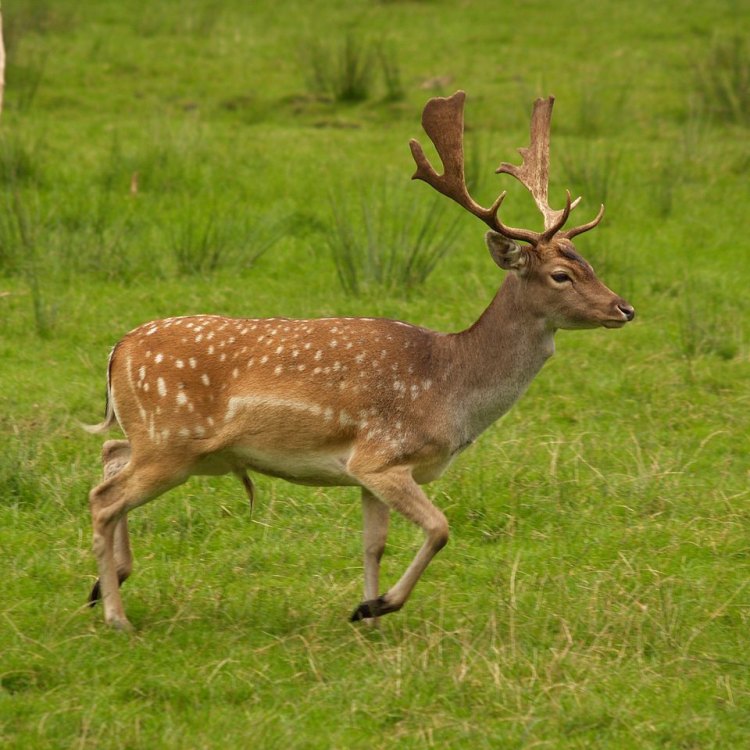
Fallow Deer
- Adult Size: Shoulder height: 70-95 cm
- Average Lifespan: 10-20 years
- Reproduction: Sexual
- Reproductive Behavior: Polygynous
- Sound or Call: Barks, moans, whistles, and bellows
- Migration Pattern: Some populations exhibit seasonal migrations
- Social Groups: Matriarchal groups or bachelor herds
- Behavior: Active mainly during dawn and dusk
- Threats: Habitat loss, hunting, and predation
- Conservation Status: Least Concern
- Impact on Ecosystem: Seed dispersal and vegetation control
- Human Use: Hunting, farming, and tourism
- Distinctive Features: Palmate antlers in males, white rump patch
- Interesting Facts: Fallow deer have been introduced to various parts of the world as game animals
- Predator: Wolves, bears, and humans
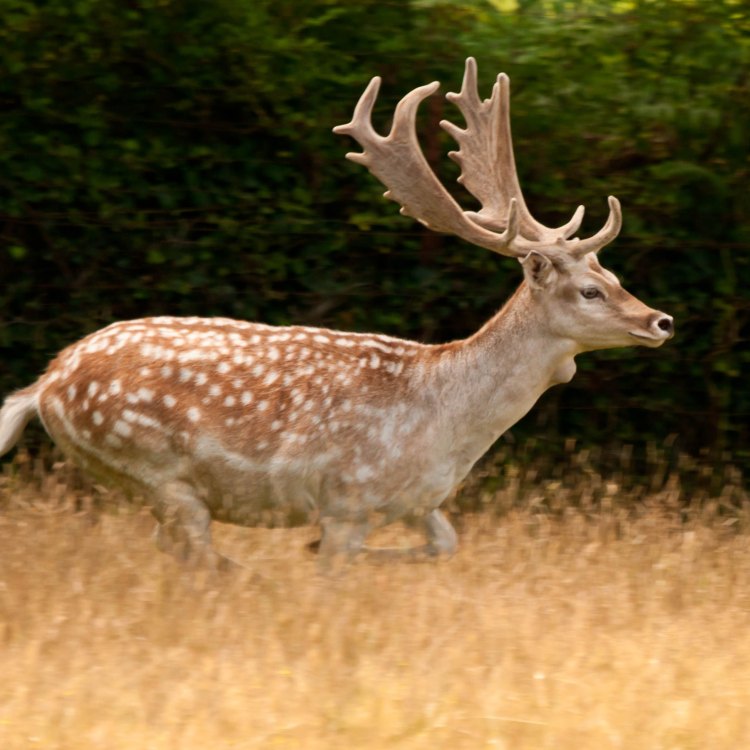
Dama dama
The Unique World of Fallow Deer: Exploring their Behavior, Ecology, and Human Interaction
The majestic fallow deer with its distinct palmate antlers and elegant gait is a commonly admired sight in many parts of the world. These beautiful and resilient creatures have captured the hearts of many with their unique features and interesting behavior. In this article, we will delve into the fascinating world of fallow deer, exploring their physical characteristics, behavior, and their impact on the ecosystem, as well as their interaction with humans.Fallow deer (Dama dama) are a species of deer native to Europe, Asia Minor, and parts of the Middle East PeaceOfAnimals.Com. They were introduced to various parts of the world as game animals and have now established populations in many countries including Australia, New Zealand, and the United States. They are found in a variety of habitats including forests, woodlands, and grasslands.
Physical Characteristics
Fallow deer are medium-sized deer, with the average adult shoulder height ranging from 70-95cm. They have a distinctive coat color, varying from reddish-brown to dark brown with white spots scattered all over their body. This coloration helps them to camouflage in their surroundings as they browse for food. They also have a white rump patch which is a key identifying feature of this species.One of the most unique features of fallow deer is their antlers. Unlike other deer species, fallow deer have palmate antlers, meaning they have a broad flat shape with multiple points. The antlers are shed and regrown every year and are used for display and fighting during the mating season Freshwater Eel.
Behavior and Socialization
Fallow deer are active mainly during dawn and dusk, making them crepuscular animals. They are herbivores and their diet primarily consists of leaves, grass, fruits, and nuts. They are also known to engage in seed dispersal, which helps in maintaining plant diversity and ecosystem balance.In terms of reproductive behavior, fallow deer are polygynous, meaning that males mate with multiple females. The breeding season, also known as the rut, occurs in the fall and is marked by intense competition between males to attract females. During this time, males will use their antlers to fight with other males for dominance and mating opportunities.
Fallow deer live in two types of social groups, either matriarchal groups led by a dominant female or bachelor herds consisting of only males. These herds are usually temporary and may change depending on the availability of resources and mating opportunities.
Threats and Conservation Status
The biggest threat to fallow deer is habitat loss. They are also hunted for their meat and antlers, primarily in areas where they have been introduced as game animals. Predation by wolves, bears, and humans also poses a threat to their survival. Despite these threats, fallow deer are classified as Least Concern by the International Union for Conservation of Nature (IUCN) due to their widespread distribution and stable populations.In addition to their resilience, fallow deer also play an important role in maintaining the balance of their ecosystem. As herbivores, they help to control vegetation growth and spread seeds, contributing to the survival of plant species. In some areas, fallow deer have also been used successfully for vegetation control in agricultural lands.
Human Interaction
Fallow deer have a long history of interaction with humans. They were first domesticated by the ancient Romans for their meat and later introduced to various parts of the world as game animals for hunting. Today, hunting, farming, and tourism are the most common ways in which humans interact with fallow deer.Hunting fallow deer is a popular form of sport in many countries. It is strictly regulated and helps to control the population of fallow deer, preventing overgrazing and habitat damage. In addition, fallow deer farming has also gained popularity, with their meat being prized for its unique flavor and tenderness.
With their striking appearance and graceful movements, fallow deer have also become popular in wildlife parks and attractions, attracting tourists and providing economic benefits to local communities.
Interesting Facts about Fallow Deer
- Fallow deer have been a staple in European art and literature for centuries, often representing nobility, grace, and love.- In ancient Rome, fallow deer were considered sacred and were only allowed to be hunted by the emperor.
- Fallow deer are known for their vocalizations, making a range of sounds including barks, moans, whistles, and bellows.
- Fallow deer are excellent swimmers and have been observed swimming long distances to reach new habitats.
- The mating ritual of fallow deer is known as "lekking", where males congregate in open areas to attract females.
In conclusion, fallow deer are a remarkable species with unique physical characteristics, interesting behavior, and important ecological roles. Their interaction with humans has a long history and continues to evolve, making them a significant part of our shared natural heritage. As responsible stewards of the environment, it is our duty to protect and conserve these beautiful creatures for future generations to admire and appreciate.
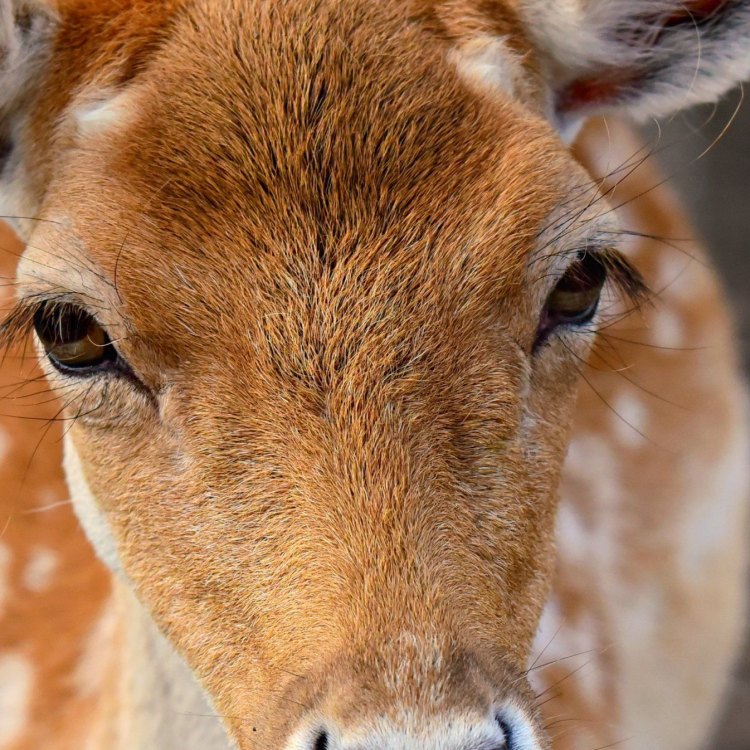
Fascinating Facts About Fallow Deer: A Graceful Species of Cervidae
Disclaimer: The content provided is for informational purposes only. We cannot guarantee the accuracy of the information on this page 100%. All information provided here may change without prior notice.

